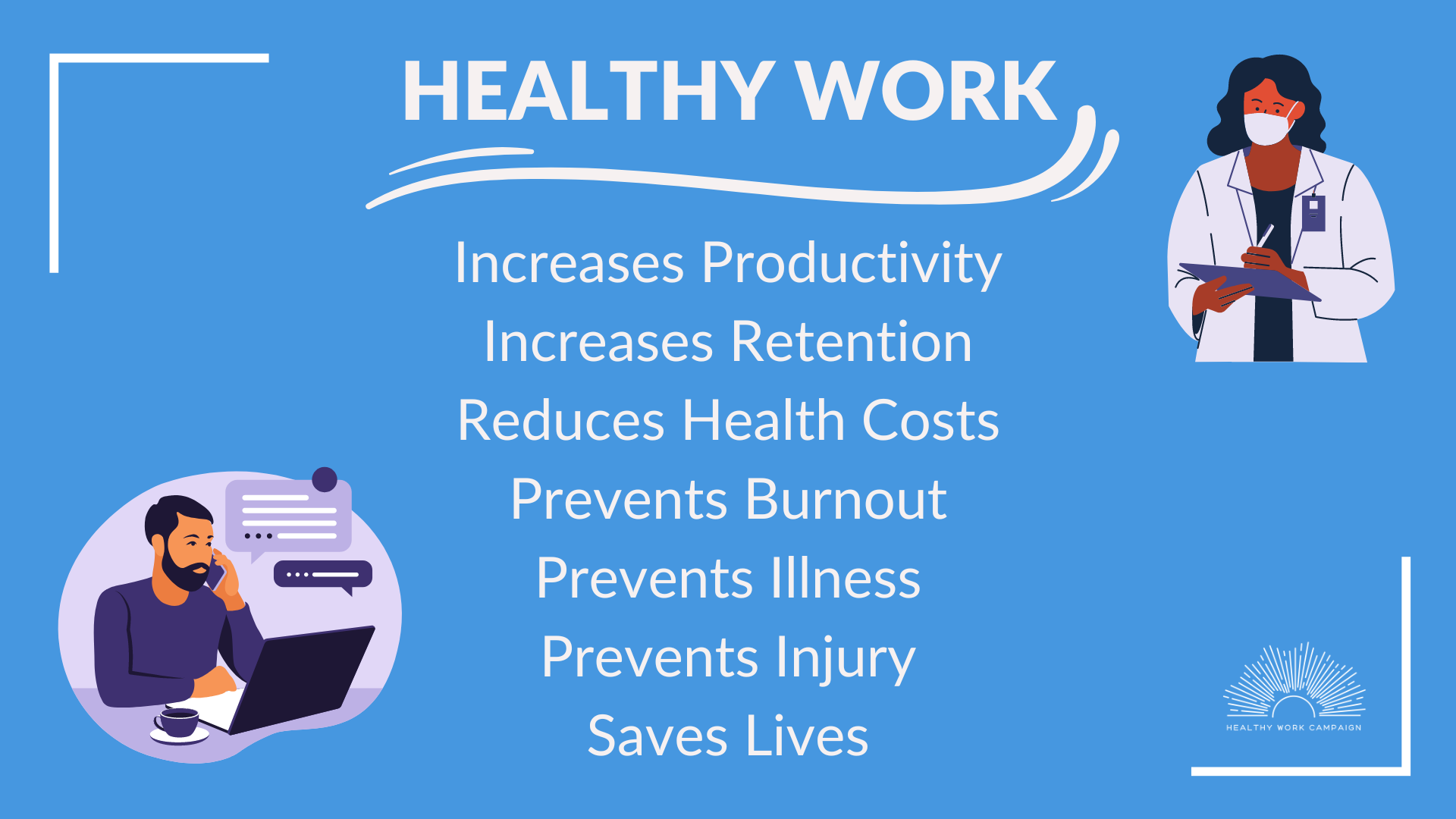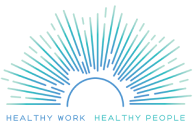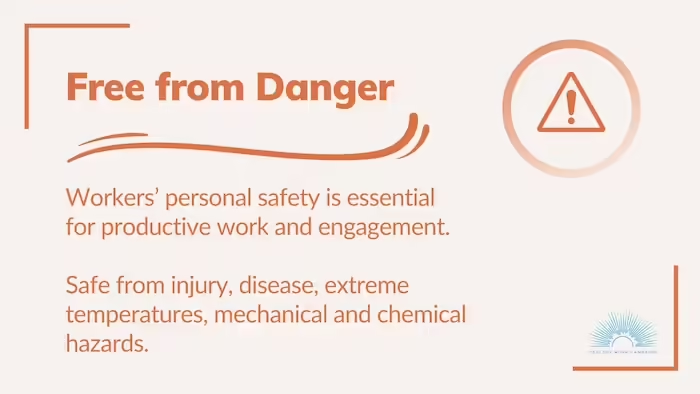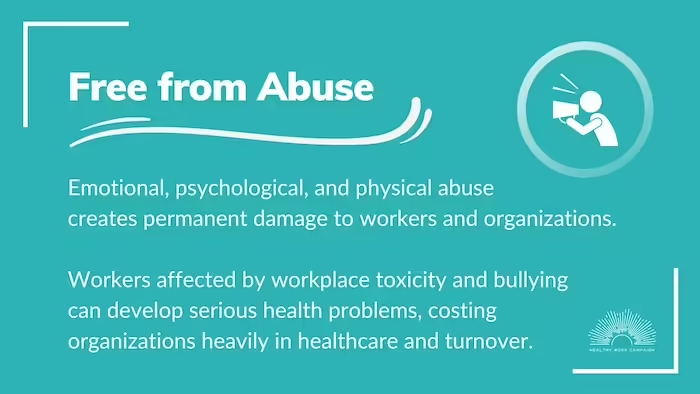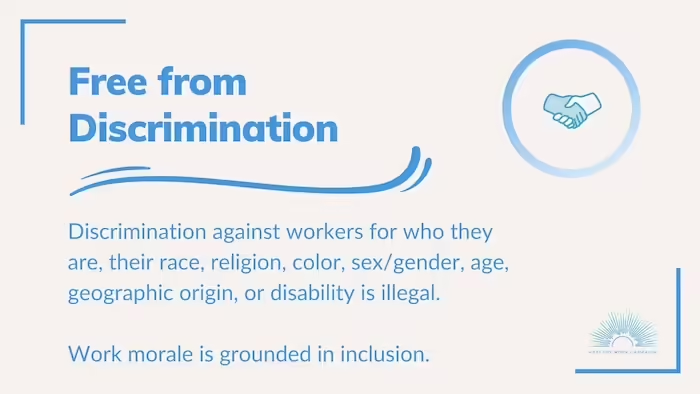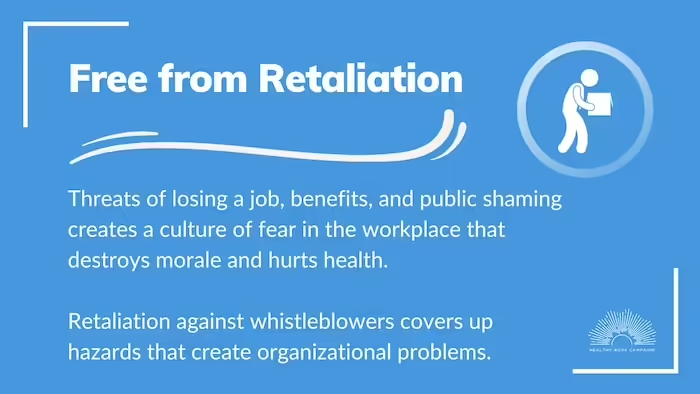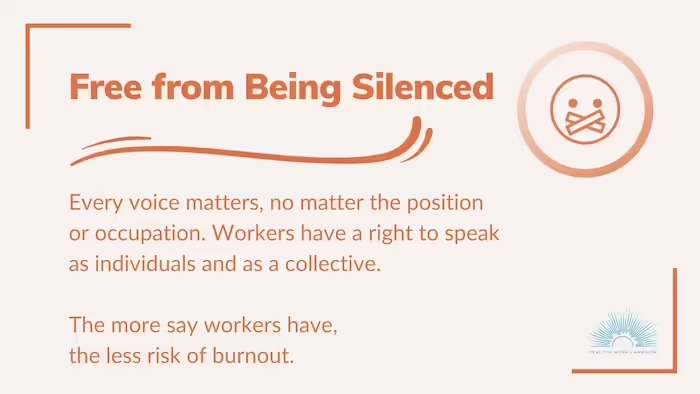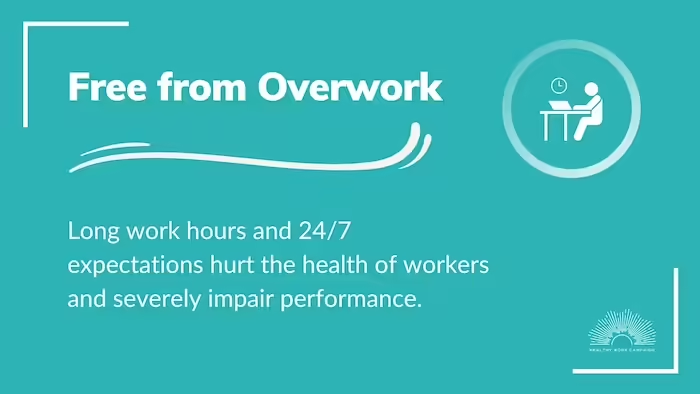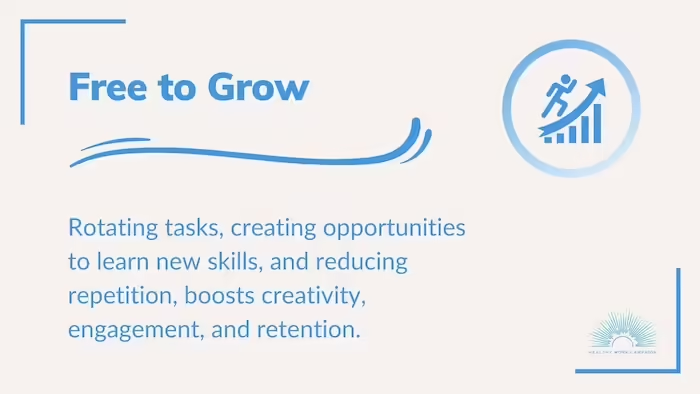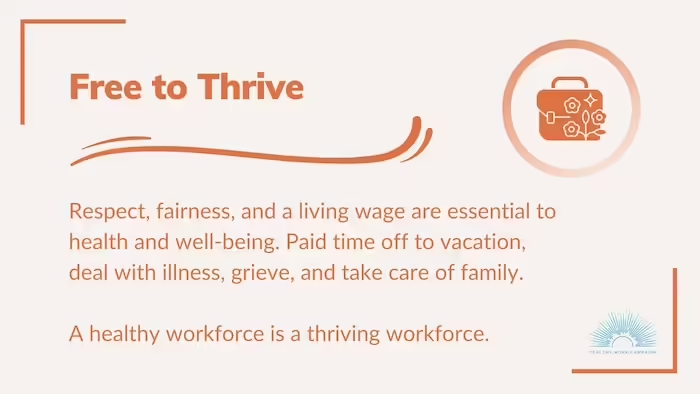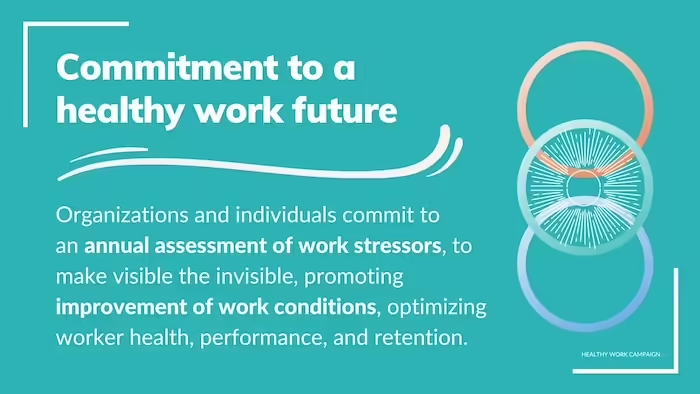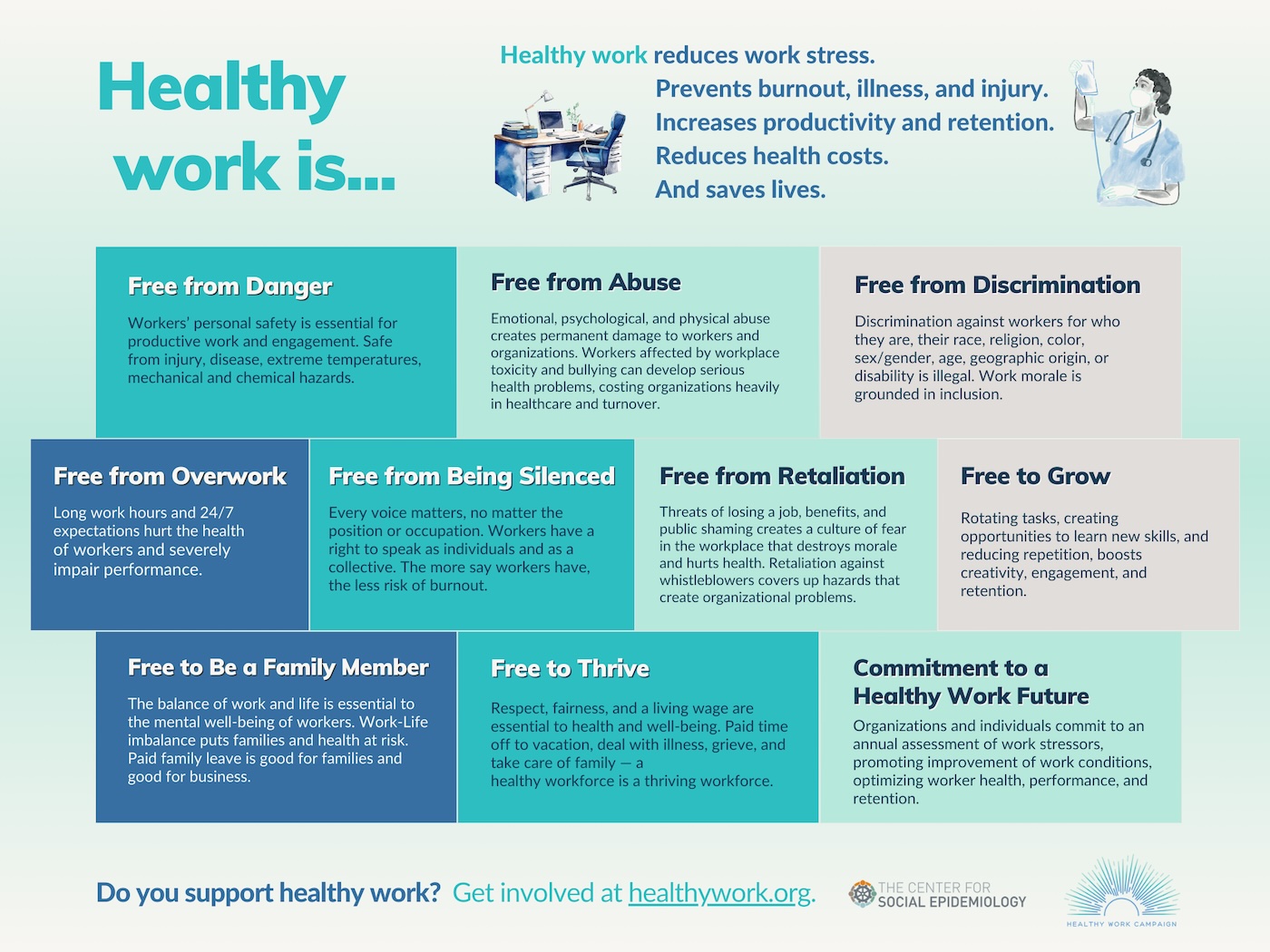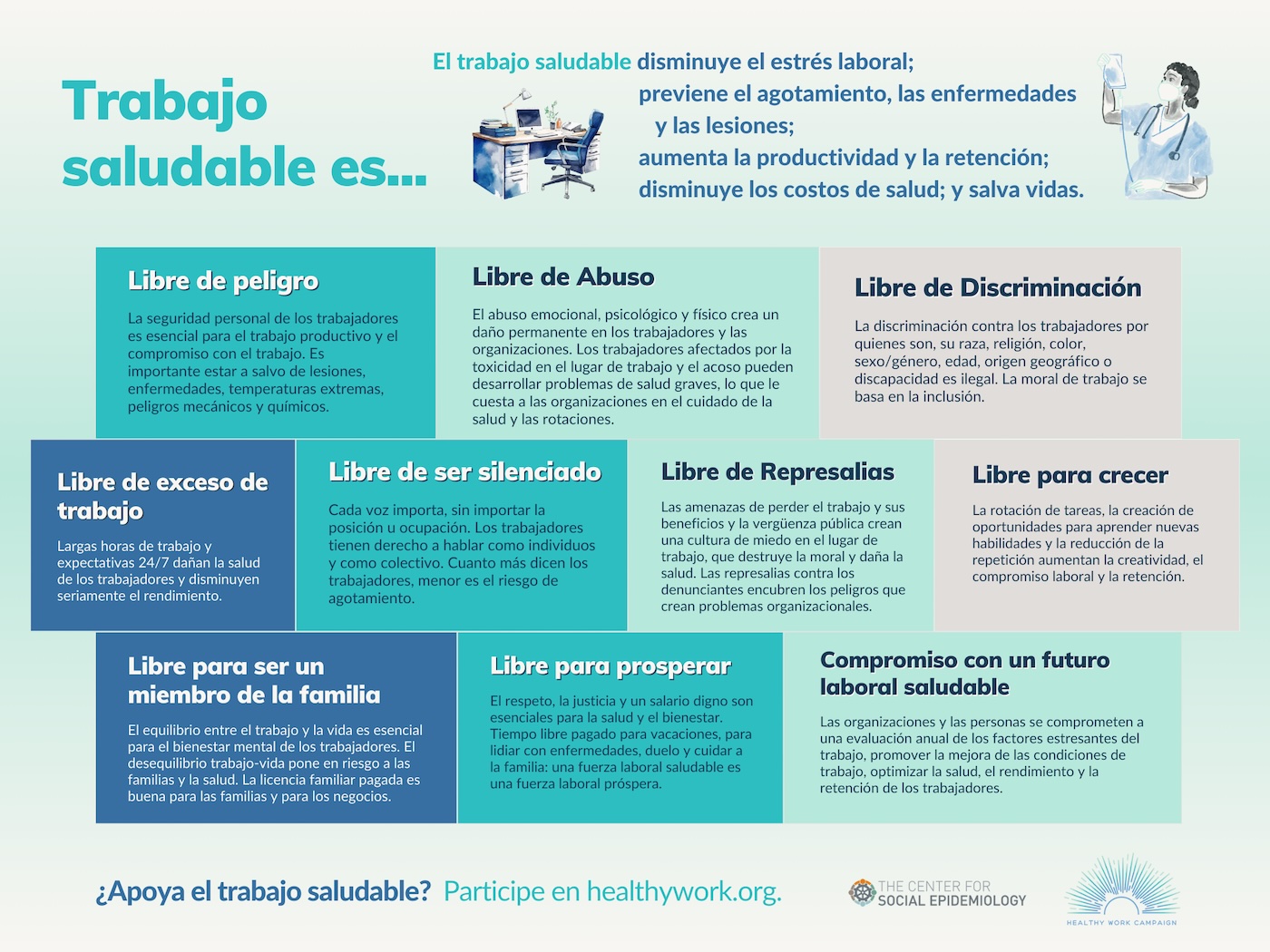Healthy work requires job control; lack of it leads to
job strain. This requires being given some autonomy over your work tasks (
decision-authority), having a “say” or a voice about making improvements in your working conditions and participating with management in decision-making about the organization. Job control can be improved by designing jobs that encourage creativity, provide opportunities to learn new things, and develop or use your special skills or abilities (
skill discretion). Job control is a powerful predictor of better health, particularly because it can protect workers from the negative effects of high job demands. (See
job strain.)
5
Manageable “demands” or workload requires having enough time to complete your work tasks in a regular workday, and a reasonable pace at which you produce a widget, write a report, or serve a customer. Manageable demands can be accomplished with adequate staffing, protected break times, and time off. It is essential that management has clear expectations, decided with input from workers directly or through collective bargaining about staffing, realistic timelines and workload.
Job strain is a work stressor that describes high demands that are difficult to manage or cope with because you have a lack of control or “say” over your tasks, schedule, and other activities having to do with your job. This work stressor is linked to
burnout,
9 depression,
3 high blood pressure,
10,11 CVD,
5 and death.
12,13 To eliminate job strain, organizations must address job demands to make them more reasonable and enhance control by allowing working people more say in decision-making about how they do their work.
Job insecurity – the concern that you might lose your job at any time – can cause anxiety and lead to depression
14 and
CVD.15 The common organizational practices of downsizing and restructuring, resulting in layoffs of workers, have significant economic
16 and health effects for those who are laid off and for those remaining,
17,18 and also increase sickness absence and mortality.
19 While competing in a global economy might make these practices seem inevitable, implementing and supporting social/government policies can make a difference and reduce job insecurity. Policies can provide access to adequate unemployment benefits, job retraining and health insurance, as is the case in many western European democracies.
20
Effective forms of
job redesign, such as rotation between different tasks in a day or in a week, or new tasks, can make work more interesting. It is one way to help workers learn and use new skills, and to reduce repetitive, monotonous work. Whether it is job rotation or other changes to jobs, when done well, changes can reduce
burnout, and lead to greater “engagement” (the opposite of boredom) and productivity.
21
Teamwork and good leadership are the hallmarks of an effective and productive workplace. Hostile or negative relationships with a supervisor are a significant source of stress and negatively affect health and well-being.
22 Good and effective supervisors listen, accept input from employees, provide help or feedback in a timely and constructive manner, and are successful in getting people to work together. They help create a supportive work environment where workers are less likely to get burnout,
9 get sick, or leave their jobs.
Co-workers are important sources of support. Helping each other complete tasks, answering questions, and showing a personal interest in each other, are important for worker well-being and can help people cope with stressors. Employers can promote a culture of teamwork (not just calling employees “team members”) and co-worker support by providing opportunities for positive interactions and stopping practices that create negative, overly competitive work environments.
Supervisor and coworker support help to reduce the negative effects of high demands and low control (
job strain).
22
“Effort” in the
effort-reward imbalance (ERI) model of job-related stress is similar to “demands.” A reasonable effort level includes having enough time to complete a heavy workload, being free of frequent interruptions, and not having ever-increasing levels of demands in your job. Balanced with an appropriate level of “
reward” (e.g., fair pay, job security, promotion opportunities and recognition)
, working people experience a sense of fairness and reciprocity which decreases stress and leads to improved health and less illness, particularly depression and
CVD.
23,24 Organizations can reduce ERI by making workloads more manageable, applying “rewards” fairly for all workers, including a living wage, adequate seniority rewards, recognition, as well as using policies that ensure advancement opportunities.
Many Americans experience “work-family/life conflict,” a lack of time and energy to adequately meet both the demands of work and non-work life. For example, you come home too tired after work to do the things you enjoy or you have so much work that it prevents you from spending time with family or friends or pursuing personal interests. Or you work long or irregular hours, which can make it difficult to manage family demands like childcare. This stressor can lead to burnout, sleep problems and impacts many productivity outcomes.
25 Organizations can help address this problem by reducing work stressors and providing flexible work policies (e.g. working from home, part-time hours, shared jobs). Training supervisors to be “family-supportive”
26 and establishing policies that respect and recognize workers right to have lives off the job will increase employees’ sense of control and autonomy, decrease turnover, and can address gender inequity.
27,28
Jobs that involve caring for others, managing customers or clients often require a mostly invisible and often undervalued kind of work.
Emotional labor is the work of managing human feelings (yours and others) and is most often performed by women and human service workers (nurses, teachers, social workers), but also retail workers and those that provide customer service. It is a requirement of the job to smile, and to be kind and compliant—even when you don’t feel that way or even when you are treated poorly by clients or customers. While this kind of work is essential, and can be rewarding, the requirement to display positive feelings and suppress negative emotions can lead to burnout.
29 Organizations can help to avoid the high costs of burnout by recognizing the long-term health effects of emotional labor, and by reducing the formal requirements to display positive feelings,
30 or implementing training programs and mentoring those new to this kind of work.
